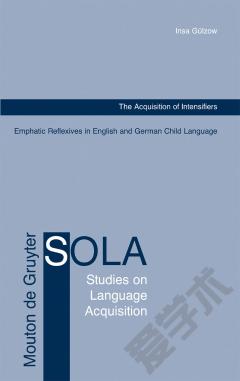Child Language and Developmental Dysphasia. Linguistic studies of the acquisition of German.
The subject of this two part work is the acquisition of language structure in which the development of syntax and morphology is examined by investigations on children without language problems and on children with developmental dysphasia. The author uses a comparative acquisition study to provide insights into the structure and development of the language acquisition device, which cannot be obtained by isolated analysis of only one type of learning. The theoretical framework used for the investigations is the learnability theory, in which acquisition models are proposed which are heavily influenced by theoretical linguistics. Part I shows how child grammar acquisition can be explained in the framework of learnability theory and Part II deals with deficiencies in normal grammar acquisition using the learnability theory.
{{comment.content}}








 京公网安备 11010802027623号
京公网安备 11010802027623号